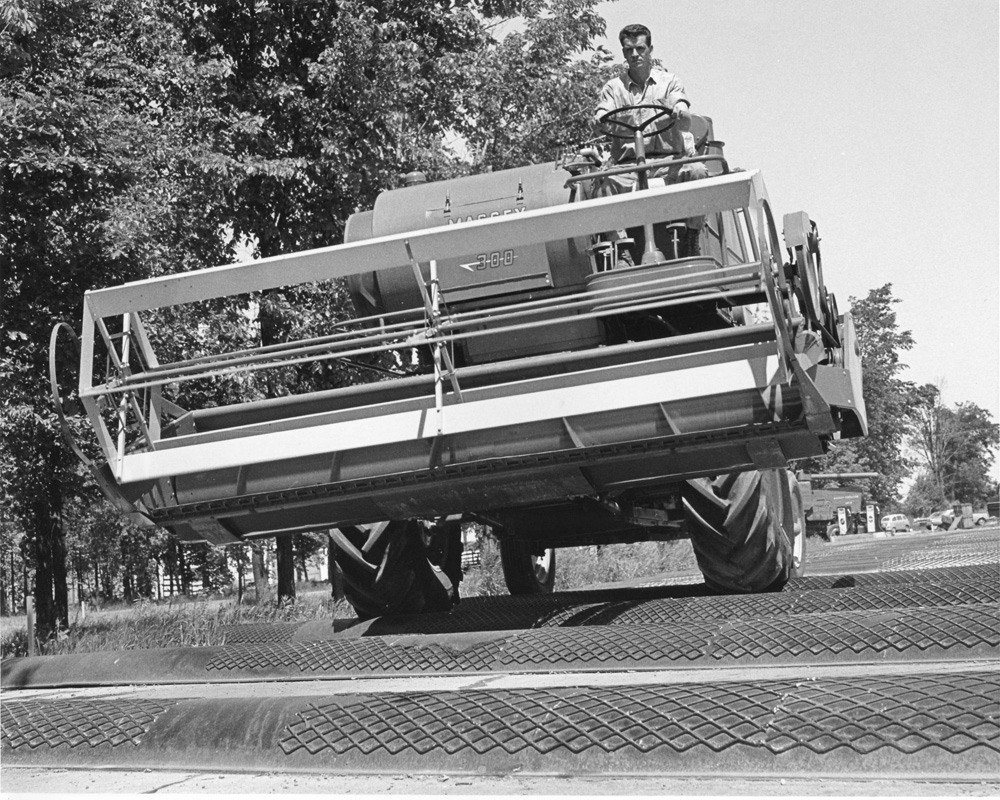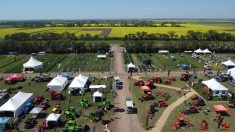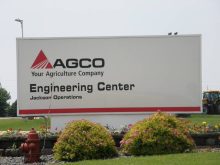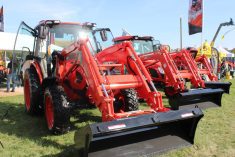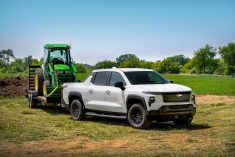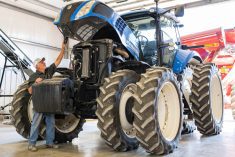The expectation of quality among buyers of farm machinery has risen substantially in past decades. As a result, all manufacturers have felt the heat to live up to customer demand and implemented a host of new quality control programs both on and off assembly lines, including at the design phase.
That goes for vehicle manufacturers as well. Rural roads can take a heavy toll on pickup trucks, even more than a lifetime of navigating potholes in Winnipeg or Regina. They can leave an older truck with a lot of squeaks and rattles from the constant jarring.
Recently, Ford offered some insight into what that brand has done during the development of the new Super Duty line to prevent those problems from developing during a truck’s life. A big part of that work is now done in the company’s “Transportable environmental four posters.” They are mobile test chambers that can be moved to various parts of the country to accommodate testing in harsh weather conditions. Just like a rough gravel road, they shake up a truck under the conditions it will face after a customer buys it.
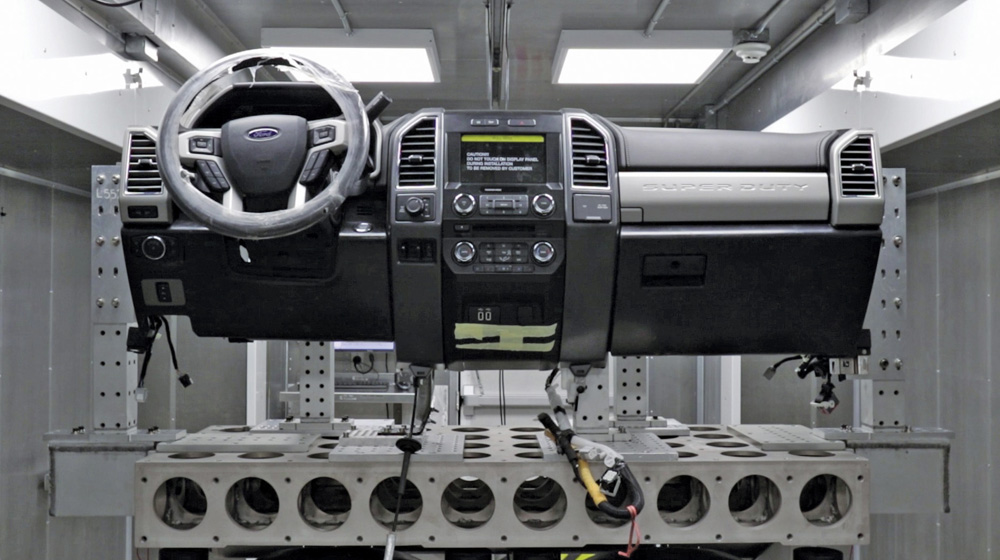
“Mobile climate and road simulators are absolutely key to finding unwanted noises in the early stages of vehicle development,” said Craig Schmatz, Ford F-Series Super Duty chief engineer, in a press release. “Extreme climates and terrains are especially known for bringing out squeaks and rattles.”
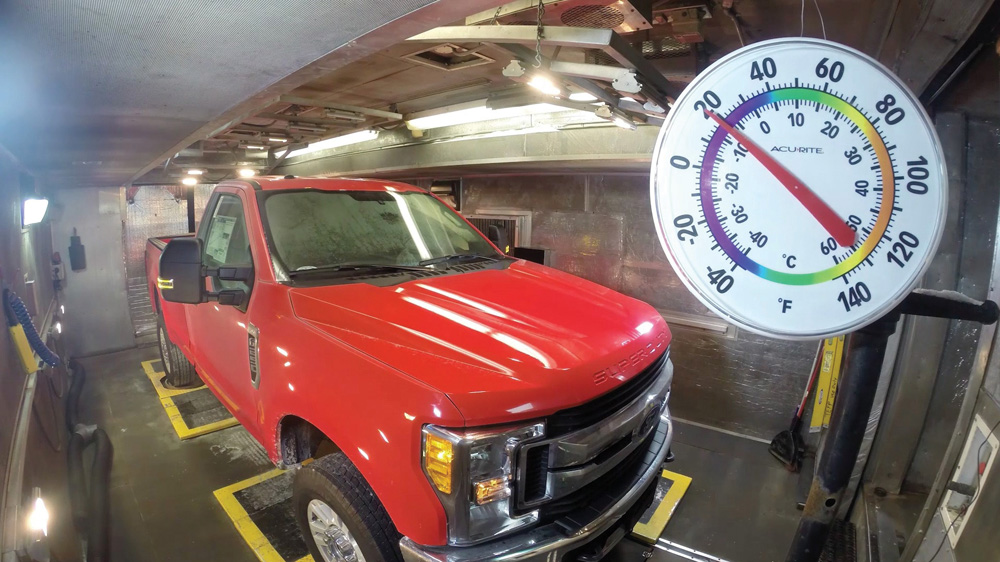
Thanks in part to these mobile shake shacks, Ford claims the new Super Duty truck platform will have logged the equivalent of more than 12 million cumulative miles in testing to help find and correct problems that cause those minor irritating defects — and the major ones too.
The shake or “jounce” test is also a common one used by farm equipment manufacturers. It’s a more modern version of the old bump track, which is a specially-designed course with built-in corrugations to shake up a machine as it is constantly driven over it for hours on end. The trouble is it also shakes up drivers. With a modern, computerized jounce test, only the machine gets beat up.
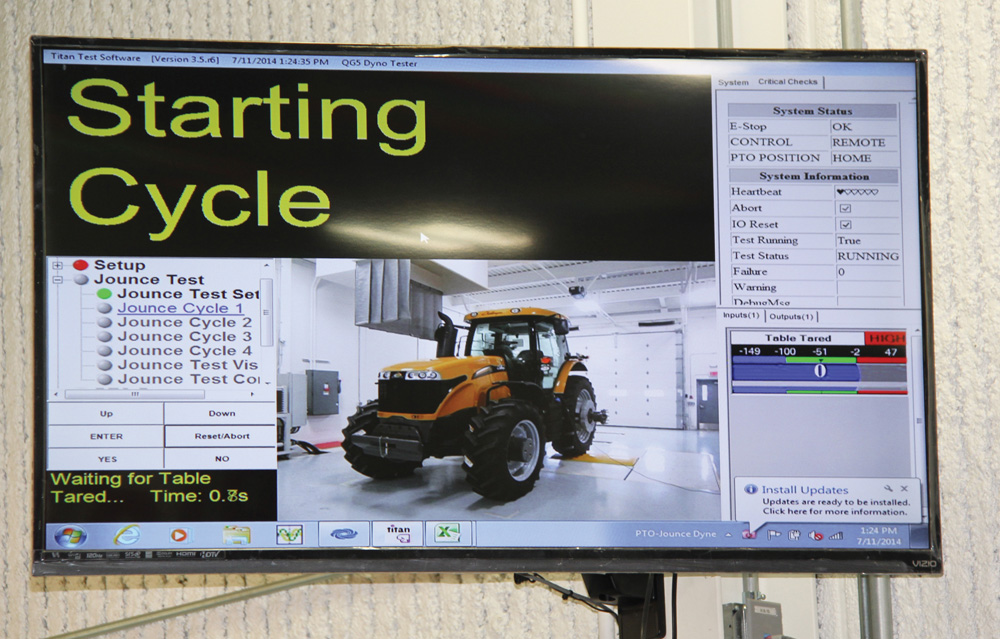
In these tests, just like those Ford was busy travelling around North America doing, a machine or vehicle is parked with each tire secured to the top of a hydraulic ram that pushes up or down with a lot of velocity, simulating the jarring of travelling on a rough road at high speed. Each of the four wheels can be shocked independently by the rams. When this test is used early on in the design phase, engineers are looking for weak spots in the overall engineering, so the shock applied to the machines can be pretty severe, much more, in fact, than a driver could stand for very long on a bump track.
Other facilities
AGCO uses a similar computer-controlled test facility at its Jackson, Minnesota, tractor and sprayer assembly plant. Prior to this recent addition to the factory, tests were done outside on one of those traditional bump tracks. Moving into a computerized test facility allowed for more control in the testing procedure and saved drivers’ backs, according to executives at the factory.
However, the purpose of these factory tests isn’t to shake the tractors apart like something done at an R&D facility, it’s to give them just enough of a rough ride to find any potential problems before machines head out to customers. The test primarily looks for any faults with hydraulic and electrical connections.
At the DLG test facility in Gross Umstadt Germany (something similar to the Nebraska Tractor Test Lab in the U.S.), engineers still use a bump track to test tractors and implements. But running machines on this track don’t require a driver. A centre-pivot arm pulls the machine around the track at the required speed.
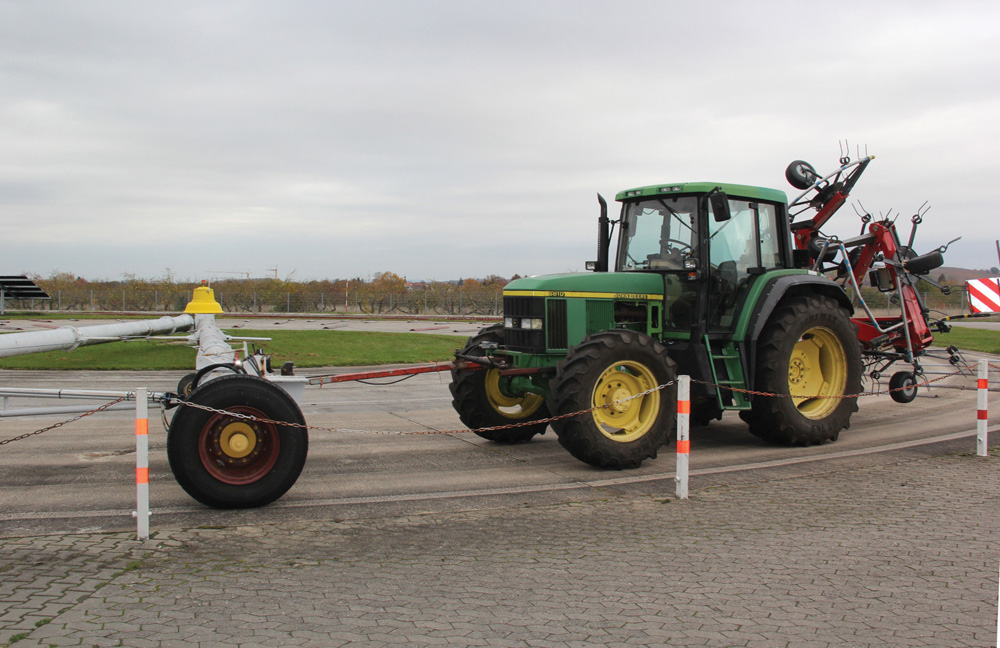
The track is used to put stress on a variety of systems built into implements as well as tractors, proving there is room for both old and new techniques in ensuring equipment designs today are as good as they should be.


